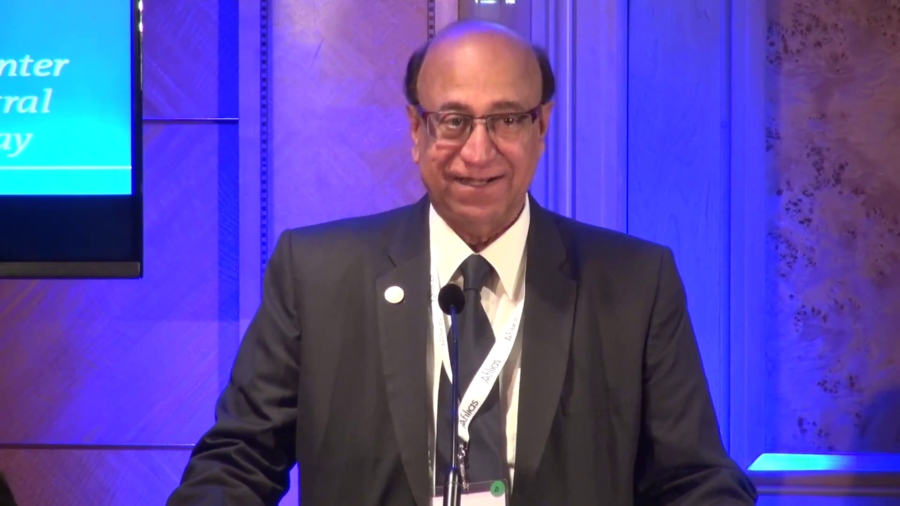Srinivasan Ramani: Thanks to the Internet Society and to Internet Hall of Fame for having invited me here and honoring me.
I stand here as a representative of number of groups of colleagues. The work that was described was a part of what I did as part of the Indian academic network project called the Education & Research Network, ERNET, funded by the government of India and supported by the United Nations Development Programme. And it was conceived in the spirit of networking for development. For developing countries everywhere. There was excitement with the idea that developing countries needed computer networking technology very badly, and this technology had a very special meaning for them. And the academic community could be forerunners in adopting and adapting the technology and innovating on it, and making it available to industry and to business.
So it was part of this large program that I worked on on this. We were fortunate we were in Mumbai where there were excellent telecom facilities. And I was the director of a national center for software technology, as was mentioned. And therefore, we were Unix hackers with BSD Unix. For which I paid a princely sum, $110, for. You know, the reel came free. A reel of tape. And with this $110 was the BSD Unix.
We were able to get a lot done. Get the computer networking suite running. And we were all set and ready for networking. But the telecom links were not there. But Mumbai had the Internet—the international gateway for telecom, so it was not too difficult for us to get good telecom connections to the world. And we connected with the Centrum Wiskunde & Informatica in Amsterdam. Colleagues there were really really kind enough to give us a connection. And we set up the first Internet gateway in India. This was done by the [?] project team at the National Centre for Software Technology. Which I hated at the time.
But more exciting than just the technology of getting a connection was working with six advanced institutes in India, the IITs as we called them, Indian Institutes of Technology, and setting up connections between Mumbai and these six IITs. And working with the six senior colleagues at all these locations. And with the government of India team in Delhi, and working with the UNDP.
So these were exciting times and we got this work done. And we were able to train hundreds of students who went on to serve the industry and counsel for the industry, pass the technology on to the industry.
So this is the background to the work that I was involved in. And I thank all of my colleagues in these teams at the National Centre for Software Technology, which is now a part of the Centre for the Development of Advanced Computing, C‑DAC.
And also I thank the colleagues of the Internet, particularly the six professors at the six IITs who cooperated with us, who were my partners. And with the government of India. And an amazing person who worked at the government of India as our interface with the government, Mr. Ramakrishnan. Ramakrishnan was a senior government official, but he was more of an academic at heart. And he worked with us like an academic. But for him I think we would have done very little in the Internet project.
I should also thank my wife Lucia Usha, who’s here. And my mother who is 99 and who will be the proudest when I show her the certificate. Occasionally when I take an online course now and I pass the requirements and I show her the certificate she says, “Oh, get it framed! I want it on the wall here in my room.” So at 98 I’m going to give her a frame copy of the certificate. She’ll be very happy. With these words I’ll conclude here. Thank you.
